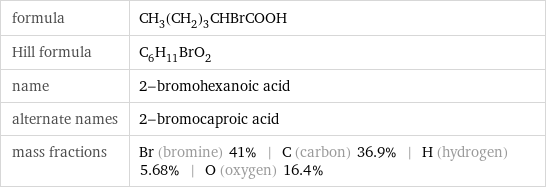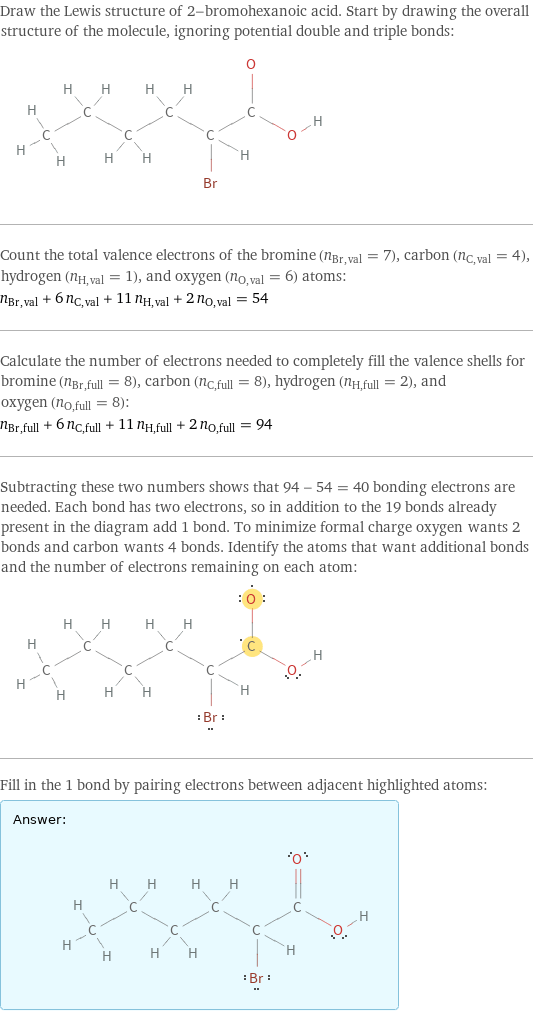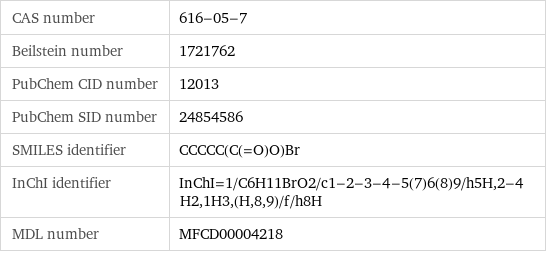Input interpretation

2-bromohexanoic acid
Chemical names and formulas

formula | CH_3(CH_2)_3CHBrCOOH Hill formula | C_6H_11BrO_2 name | 2-bromohexanoic acid alternate names | 2-bromocaproic acid mass fractions | Br (bromine) 41% | C (carbon) 36.9% | H (hydrogen) 5.68% | O (oxygen) 16.4%
Lewis structure

Draw the Lewis structure of 2-bromohexanoic acid. Start by drawing the overall structure of the molecule, ignoring potential double and triple bonds: Count the total valence electrons of the bromine (n_Br, val = 7), carbon (n_C, val = 4), hydrogen (n_H, val = 1), and oxygen (n_O, val = 6) atoms: n_Br, val + 6 n_C, val + 11 n_H, val + 2 n_O, val = 54 Calculate the number of electrons needed to completely fill the valence shells for bromine (n_Br, full = 8), carbon (n_C, full = 8), hydrogen (n_H, full = 2), and oxygen (n_O, full = 8): n_Br, full + 6 n_C, full + 11 n_H, full + 2 n_O, full = 94 Subtracting these two numbers shows that 94 - 54 = 40 bonding electrons are needed. Each bond has two electrons, so in addition to the 19 bonds already present in the diagram add 1 bond. To minimize formal charge oxygen wants 2 bonds and carbon wants 4 bonds. Identify the atoms that want additional bonds and the number of electrons remaining on each atom: Fill in the 1 bond by pairing electrons between adjacent highlighted atoms: Answer: | |
3D structure

3D structure
Basic properties

molar mass | 195.06 g/mol phase | liquid (at STP) boiling point | 137 °C (measured at 2399 Pa) density | 1.37 g/cm^3
Units

Liquid properties (at STP)

density | 1.37 g/cm^3 refractive index | 1.472
Units

Chemical identifiers

CAS number | 616-05-7 Beilstein number | 1721762 PubChem CID number | 12013 PubChem SID number | 24854586 SMILES identifier | CCCCC(C(=O)O)Br InChI identifier | InChI=1/C6H11BrO2/c1-2-3-4-5(7)6(8)9/h5H, 2-4H2, 1H3, (H, 8, 9)/f/h8H MDL number | MFCD00004218
Safety properties

flash point | 110 °C